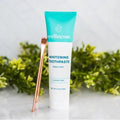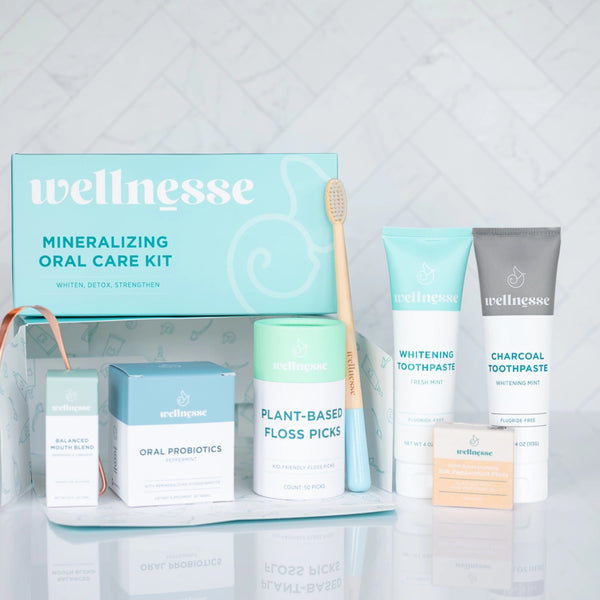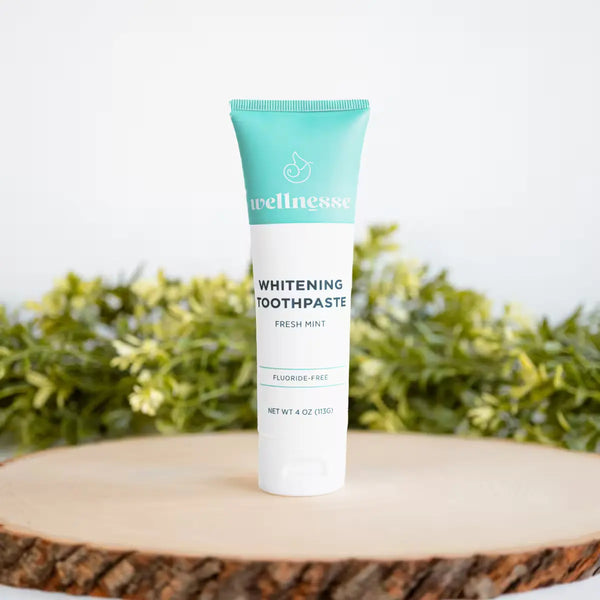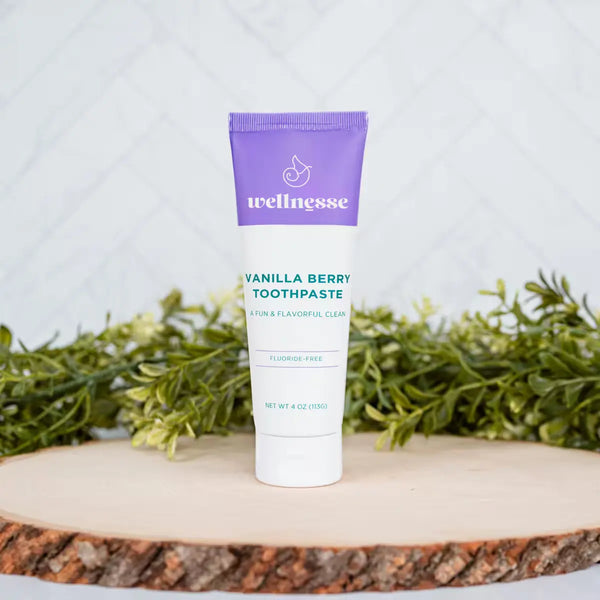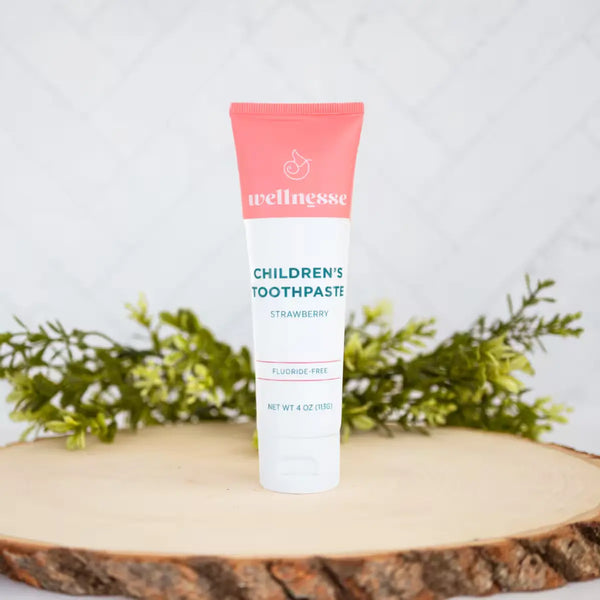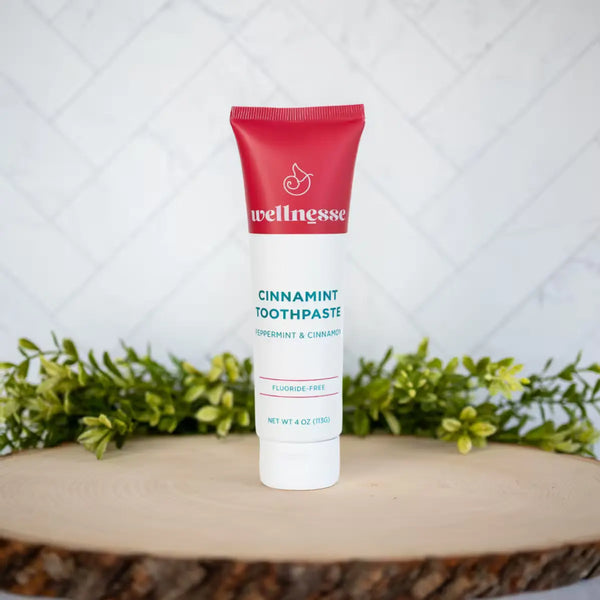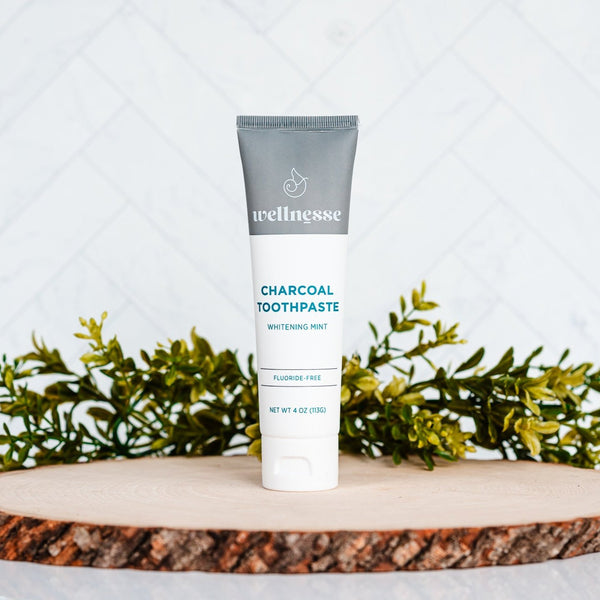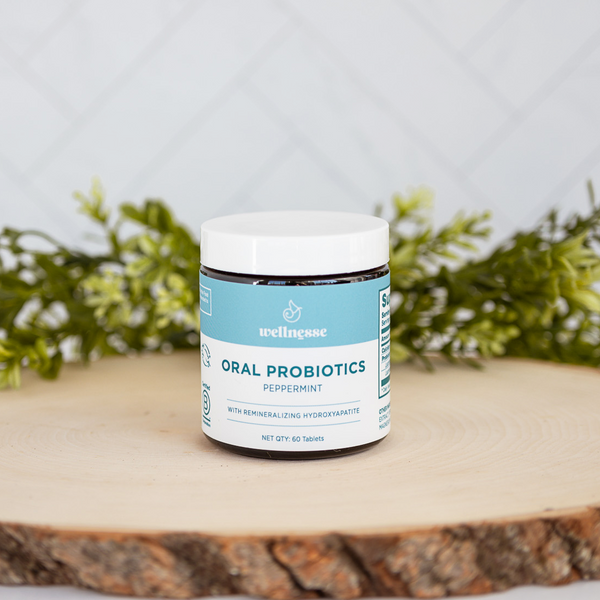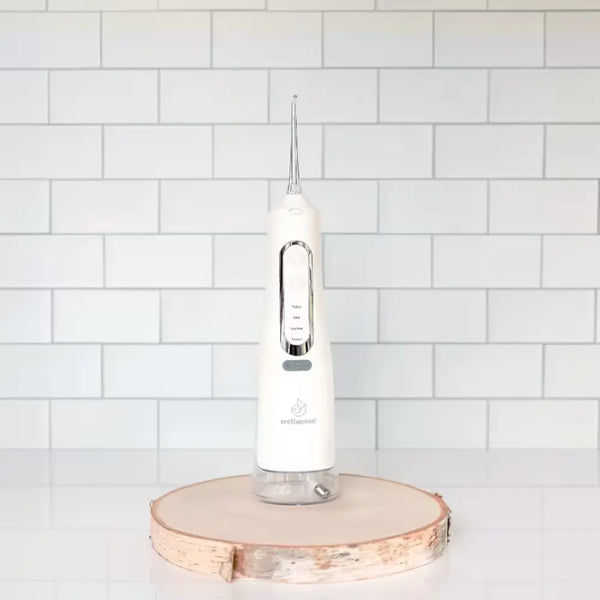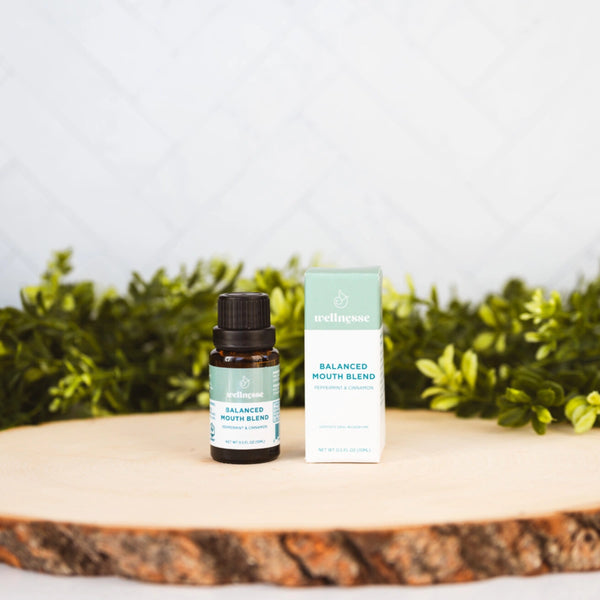In recent years, an increasing number of people have begun to turn to natural and safer products in every area of their lives, including dental hygiene. With growing awareness of ingredient safety and potential side effects, the demand for fluoride-free toothpaste has increased significantly. Consumers want oral care products that are gentle yet effective, without unnecessary chemicals or synthetic additives. This has led to the rise of alternative solutions like hydroxyapatite, which aligns perfectly with clean living principles. People are searching for the best natural toothpaste options that clean while also protecting.
How Hydroxyapatite Toothpaste Works
The Bioidentical Structure
Hydroxyapatite is a naturally occurring mineral form of calcium apatite, comprising nearly 97% of the enamel in human teeth. This makes it uniquely compatible with our bodies, which recognize it as a familiar substance rather than a foreign one. Because it closely mimics the structure of tooth enamel, it is especially effective in oral care. This mineral rebuilds what’s already there, unlike synthetic additives that might coat the teeth. The hydroxyapatite toothpaste benefits begin with this molecular similarity, which allows the ingredient to bond to and integrate with weakened or damaged enamel.

How It Integrates With Tooth Enamel Naturally
One of the most exciting things about hydroxyapatite is how seamlessly it becomes part of the tooth’s surface. Hydroxyapatite particles settle into microscopic pits and grooves that have formed from everyday wear when applied through brushing. Over time, these particles fuse with the surrounding enamel, creating a smooth, protective layer that closely resembles the original structure. This unique ability allows it to strengthen tooth enamel naturally, offering long-term benefits that go beyond basic cleaning.
Hydroxyapatite vs. Fluoride
Fluoride works by hardening the outer layer of enamel; however, it doesn't rebuild lost mineral content. Hydroxyapatite, on the other hand, is proactive in its approach to repair. It replaces what’s been lost by depositing minerals right where they’re needed. It's clear that hydroxyapatite is focused on regeneration rather than resistance alone. Additionally, because it doesn’t carry the risk of overexposure or fluorosis, it’s a gentler option, especially for children or those with sensitivity concerns.
History and Usage of Hydroxyapatite in Dentistry
The journey of hydroxyapatite from a laboratory material to a trusted mainstay in dental care is a testament to its remarkable compatibility with human biology and its effectiveness in promoting oral health. Hydroxyapatite, a naturally occurring mineral that makes up the majority of tooth enamel and bone, first gained attention in the medical field during the 1970s. Its bioactive and biocompatible properties made it an ideal candidate for use in bone grafting and dental implants. Early on, dental researchers recognized that hydroxyapatite’s chemical structure closely mirrored that of natural teeth and bones, which meant it could be integrated into the body without triggering adverse reactions. This paved the way for its use in reconstructive procedures such as repairing bone defects in the jaw, supporting dental implants, and even coating prosthetic devices to enhance their stability and longevity.
Types and Forms of Hydroxyapatite Used in Toothpaste
Not all hydroxyapatite toothpastes are created equal—one of the most important distinctions lies in the form of hydroxyapatite used. The two primary forms found in oral care products are nano-hydroxyapatite and micro-hydroxyapatite, each with unique properties and advantages. Understanding these differences can help you make a more informed decision when selecting a toothpaste that aligns with your oral health needs and personal preferences.
Nano-hydroxyapatite (nano-HAp) refers to tiny hydroxyapatite particles, typically in the range of 20–80 nanometers. This size is much smaller than the natural tubules in dentin, which allows nano-HAp particles to penetrate deeply into microscopic crevices and imperfections on the tooth surface. As a result, nano-hydroxyapatite is particularly effective at filling in these tiny gaps, providing a smooth and uniform layer over the enamel. This property makes nano-hydroxyapatite an excellent choice for those seeking targeted repair, reduction in sensitivity, and enhanced remineralization at a microscopic level. Some studies have also suggested that nano-HAp may offer superior relief for sensitive teeth, as its small particle size allows it to block exposed dentin tubules more efficiently. Additionally, nano-hydroxyapatite is synthetically produced, ensuring purity and consistency in particle size and shape—important factors for both efficacy and safety.
On the other hand, micro-hydroxyapatite (micro-HAp) consists of larger particles, generally ranging from 5 to 10 microns in length. While these particles are bigger than those found in nano-HAp, they are still small enough to interact effectively with the tooth surface. Micro-hydroxyapatite is often sourced from natural mineral ore and is sometimes preferred by those seeking the most natural formulation possible. Because micro-HAp can be used at higher concentrations in toothpaste, it offers robust remineralization benefits and is well-suited for individuals who prioritize high levels of active ingredients. Although micro-HAp may not penetrate as deeply as nano-HAp, it still provides a strong protective barrier and supports the natural repair of enamel. Some users prefer micro-hydroxyapatite for its natural origin and the perception that it is less processed than its nano counterpart. Both forms of hydroxyapatite are considered safe and effective for daily oral care, but their differences in particle size, source, and application may influence which is best for your needs. When selecting a hydroxyapatite toothpaste, consider your specific oral health goals and check product labels for information on the type and concentration of hydroxyapatite used.
Safety and Side Effects of Hydroxyapatite Toothpaste
When considering a new oral care product, safety is a top priority for most consumers. Hydroxyapatite toothpaste stands out for its excellent safety profile, which is a significant reason why it has become such a popular alternative to traditional fluoride toothpaste. One of the most reassuring aspects of hydroxyapatite is its biocompatibility. This mineral is naturally found in the human body, making up the majority of our tooth enamel and a significant portion of our bones. Because hydroxyapatite is bioidentical to the mineral structure in our teeth, the body recognizes it as a familiar substance rather than something foreign. This unique property means that hydroxyapatite is not only non-toxic but also highly unlikely to cause irritation or adverse reactions when used as directed in toothpaste formulations.
Benefits of Hydroxyapatite Toothpaste
Enamel Remineralization Without Fluoride
Many people assume that fluoride is the only way to restore enamel, but that simply isn’t true. Hydroxyapatite has proven highly effective in the process of enamel remineralization, making it a valuable alternative for those avoiding fluoride. This process involves reintroducing calcium and phosphate into weakened areas of the teeth, helping to reinforce their structure. Since hydroxyapatite already contains these key minerals in the right balance, it provides the body with precisely what it needs to rebuild enamel. It's a non-invasive way to preserve dental health and is particularly appealing to those following holistic wellness practices.
Sensitivity Reduction Through Surface Repair
Tooth sensitivity can make eating and drinking uncomfortable, especially when the enamel is compromised. Hydroxyapatite helps ease this problem by forming a new mineralized layer over exposed dentin, essentially acting as a buffer against temperature and acid. This physical repair of the surface not only reduces discomfort but also helps prevent further erosion. Because it seals microscopic openings in the enamel, this is a great choice for anyone seeking enamel-safe toothpaste that goes beyond symptom relief.
Natural Cavity Protection for Everyday Use
Cavities form when acids from food or bacteria wear down the enamel, but daily use of hydroxyapatite can help combat this process from the start. As the mineral bonds with the teeth, it acts like a shield, reinforcing the outer layer and minimizing vulnerability. This defense mechanism not only prevents future decay but also creates a smoother surface that resists plaque buildup. It's a reliable way to support long-term oral health through regular brushing.
Popular Brands and Products
As hydroxyapatite toothpaste gains popularity, a growing number of brands now offer this innovative ingredient in their oral care lines. Among the recognized is Wellnesse, which has built its reputation on using a transparent ingredient list free from artificial flavors, dyes, and harsh chemicals. Their mineral toothpaste is frequently praised for its gentle yet effective formula, and the brand emphasizes that its hydroxyapatite is as effective as fluoride for remineralization, making it a trusted choice for families and those with sensitivities. When comparing these brands, key factors to consider include the type of hydroxyapatite used (nano vs. micro), the concentration of active ingredients, the presence or absence of synthetic additives, and the brand’s overall commitment to transparency and sustainability. Some brands focus on targeted benefits such as sensitivity relief, whitening, or microbiome support, while others prioritize eco-friendly packaging or allergen-free formulations. Exploring product labels and customer feedback can help consumers identify the hydroxyapatite toothpaste that best aligns with their oral health goals and lifestyle preferences.

Choosing the Best Natural and Non-Toxic Toothpaste
What to Look for in Ingredient Panels
Choosing a healthy toothpaste starts with reading the ingredient label carefully. Brands that fully disclose ingredients show greater commitment to wellness:
-
Avoid Additives: Steer clear of synthetic additives that may contribute to irritation or systemic stress over time. Parabens have raised concerns due to their potential endocrine-disrupting properties. Sulfates, such as sodium lauryl sulfate (SLS), are responsible for the foaming action in many pastes; however, they can strip the mouth of its protective mucosa and aggravate sensitive tissue. Artificial sweeteners, such as saccharin or aspartame, may enhance flavor but offer no oral health benefits and are often linked to unnecessary chemical exposure. Also, dyes and unnecessary colorants serve purely aesthetic purposes while introducing potential allergens or irritants. A cleaner ingredient list reduces the burden on your body while prioritizing oral health over superficial performance.
-
Look for Actives: A truly effective toothpaste should contain active ingredients that go beyond cleaning to promote healing. Xylitol, another powerful active, not only sweetens the formula naturally but also actively combats cavity-causing bacteria by disrupting their ability to adhere to teeth. Other useful actives might include calcium phosphates, arginine, or zinc citrate, which all serve to strengthen enamel or inhibit plaque development. The presence of well-researched active compounds transforms toothpaste from a simple hygiene product into a targeted therapeutic tool.
-
Gentle Botanicals: Toothpaste can also soothe and support the soft tissues of the mouth. That’s where gentle botanicals like aloe vera, chamomile, and tea tree oil come in. Aloe vera is especially valuable for people with sensitive gums or frequent irritation, as it offers natural anti-inflammatory and healing properties. Essential oils deliver pleasant flavors but also contribute antimicrobial effects that support a balanced oral microbiome. These botanical ingredients enhance comfort and promote a refreshing post-brush feel without the need for synthetic flavors or fragrances.
-
Clear Labeling: A commitment to transparency is one of the most telling signs of a trustworthy toothpaste brand. Full ingredient labeling demonstrates that the manufacturer respects consumer knowledge and values informed decision-making. Brands that hide behind vague terms like “flavoring” or list incomplete components should raise red flags. A well-labeled product should include both active and inactive ingredients, along with the roles each one plays.
Evaluating the best organic toothpaste through the lens of ingredients empowers you to make choices that are aligned with oral health. It becomes an informed investment in your long-term health.
Recommended Concentration Levels
A toothpaste should contain a sufficient amount of hydroxyapatite, generally around 10% by weight, which is considered ideal for daily use. Lower concentrations may offer surface-level benefits, but higher percentages support deeper remineralization. It’s essential to choose a product that strikes the right balance: enough of the active ingredient to deliver results without being abrasive. Anyone searching for non-fluoride toothpaste should verify the concentration listed on the packaging.
Certification Labels and Allergen-Safe Options
Certifications offer an extra layer of reassurance when shopping for natural toothpaste. Seals from organizations such as the USDA, Ecocert, or EWG indicate that a product meets stringent criteria for safety and environmental impact. In addition to checking for organic credentials, it’s also wise to look for allergen-free claims, especially if you have sensitivities. For those seeking a toothpaste without fluoride, these markers help confirm that you're selecting a formula aligned with your health priorities.
Daily Use and Best Practices for Enamel Repair
Brushing Techniques for Optimal Remineralization
Use a soft-bristled brush to avoid damaging the enamel surface while still spreading the paste thoroughly across your teeth. Focus on gentle, circular motions rather than aggressive scrubbing, and avoid rinsing with water immediately after brushing. This lets the hydroxyapatite remain on your teeth longer, maximizing absorption. Those searching for the best non-toxic toothpaste should also consider how it interacts with the brushing technique. A quality product works even better when paired with mindful habits that support enamel repair.
Complementing Dietary Habits
Your daily diet has a powerful impact on how well your toothpaste can support enamel recovery. Here are key adjustments:
-
Add More Leafy Greens: Spinach, kale, and Swiss chard are loaded with essential minerals that are vital for maintaining strong enamel. These vegetables also promote a balanced pH level in the mouth, which helps prevent the acidic conditions that break down tooth surfaces. When your mouth’s environment remains closer to neutral, remineralizing agents in your toothpaste can work more effectively, creating a surface that’s more receptive to enamel-strengthening compounds. Beyond minerals, leafy greens also contain folic acid and other essential micronutrients that support gum health, making them a comprehensive food for oral wellness. Their fibrous texture also stimulates saliva production, further contributing to enamel protection by neutralizing acids.
-
Limit Sugary Snacks: Consuming sugar-rich foods like candy, cookies, or soda feeds the oral bacteria that produce acid as a byproduct, which leads to demineralization of enamel. This acid weakens tooth surfaces and interferes with the benefits of enamel-strengthening toothpaste by creating a hostile oral environment. Even if you brush consistently, frequent sugar intake can cancel out the benefits of your toothpaste because enamel doesn't get the downtime it needs to rebuild. Reducing sugary snacks, especially between meals, allows your saliva and toothpaste ingredients to work more effectively. Cutting back on sugar decreases the frequency of pH dips in the mouth. Focus on limiting both overt sugars (like in sweets and sodas) and hidden sugars in processed foods. This change not only supports enamel health but also contributes to overall metabolic and immune health.
-
Drink Water Throughout the Day: Staying hydrated is often overlooked in oral care, but it has a direct influence on how well your enamel can recover from daily wear. Water acts as a natural cleanser, washing away food particles, sugars, and acids that accumulate on tooth surfaces. Regular sips throughout the day help maintain moisture in the mouth, which is essential for consistent saliva production. Saliva is your body’s first line of defense in enamel protection. Aim to drink water after meals, snacks, and acidic beverages like coffee or juice to reduce prolonged acid exposure.
-
Choose Dairy Wisely: Cheese can be a post-meal asset, as it balances mouth pH and forms a protective coating on teeth. When paired with a high-quality toothpaste, dairy’s mineral content enhances your enamel’s ability to absorb rebuilding agents. However, not all dairy is equally beneficial. Flavored yogurts or sweetened milk products can introduce sugars that counteract the oral health benefits. That’s why it’s important to choose options that are low in sugar and preferably plain or unsweetened.
-
Avoid Sticky Processed Foods: Sticky processed snacks are among the worst offenders when it comes to undermining enamel recovery. These foods tend to cling to tooth surfaces, settling into grooves and between teeth where they continue to feed bacteria long after eating. The prolonged presence of sugars leads to sustained acid production, which directly interferes with enamel repair efforts, even if you’re using a remineralizing toothpaste. In some cases, these residues can also form a barrier that prevents hydroxyapatite from effectively interacting with the enamel surface. Additionally, these foods often require forceful chewing, which can stress teeth and exacerbate microfractures in compromised enamel.
Pairing your oral care with these smart nutritional decisions makes your approach proactive, protecting your smile from both the inside and outside.
Frequency and Duration of Use
Consistency is essential when it comes to reaping the full benefits of hydroxyapatite. Dentists generally recommend brushing at least twice daily, with each session lasting around two minutes. This allows the mineral enough contact time with the enamel to settle into tiny imperfections and begin the repair process. Skipping applications or rushing through brushing can minimize results. Those looking for toothpaste for enamel repair should consider using hydroxyapatite as a non-negotiable part of their routine. Regular application can lead to noticeable improvements in enamel texture.
Where to Buy Hydroxyapatite Toothpaste Online
Accessing high-quality hydroxyapatite products is now easier than ever, thanks to the rise of reputable online retailers. It’s important to review product descriptions carefully, focusing on ingredient quality and consumer reviews. As mentioned, look for transparency around sourcing and formulation to ensure the product meets your standards. Shopping online often provides the most comprehensive selection, including hard-to-find organic or allergen-free formulas that may not be available in local stores.
Hydroxyapatite stands out as a thoughtful alternative for those who are looking to move away from traditional fluoride-based oral care. Rather than relying on chemical reactions, it supports the body’s natural ability to rebuild enamel with substances it already recognizes and uses. This makes it especially appealing to individuals focused on wellness and low-toxicity products. Switching to a natural alternative to fluoride toothpaste is about choosing something that actively improves dental resilience. With strong scientific backing and excellent compatibility with the human body, hydroxyapatite continues to earn its place as a trusted solution in modern oral hygiene.
